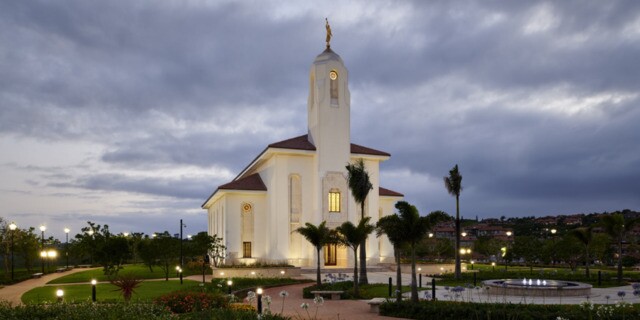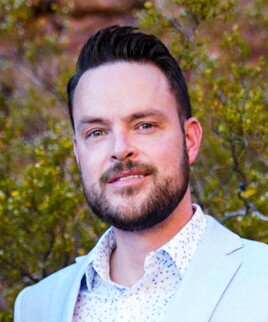There are two things Latter-day Saints get really excited about: general conference and Disney. So what happens when you put them together? Over the years, there have been several Disney-related stories or comments used in conference talks to make a point or share a value. Here are a few of them.
Note: Some of these references are to the original books or fairy tales that Disney adapted for film—but they’re included since they are most familiar to us today through their Disney adaptations.
1. W. Craig Zwick
Emeritus Member of the Seventy, October 2017, “Lord, Wilt Thou Cause That My Eyes May Be Opened”
Elder Zwick began his talk by recounting the story of young Simba and a classic line from the movie Lion King 1½, “look beyond what you see” as an analogy for what we must all also do.
“The Lion King is a classic animated film about the African savanna. When the lion king dies while saving his son, the young lion prince is forced into exile while a despot ruler destroys the balance of the savanna. The lion prince reclaims the kingdom through the help of a mentor. His eyes are opened to the necessity of balance in the great circle of life on the savanna. Claiming his rightful place as king, the young lion followed counsel to ‘look beyond what you see.’
“As we learn to become inheritors of all our Father has, the gospel mentors us to look beyond what we see. To look beyond what we see, we must look at others through the eyes of our Savior.”
Read the rest of Elder Zwick's talk here.
2. Thomas S. Monson
First Counselor in the First Presidency, April 1998, “Look to God and Live”
Because when general authorities take an occasional trip to Disneyland they find awesome analogies to share later.
“I commence my message this morning with a question: Have you ever taken a vacation with your entire family? If not, you are in for some surprises when you do. My wife and I a few years ago joined our children, their companions, and the grandchildren at Disneyland in southern California. Beyond the entrance to the famous theme park, the group rushed to what was then the newest feature—Star Tours. You enter a simulated rocket, take your seat, and fasten your seat belt. All of a sudden the entire vehicle begins to vibrate violently. I think the mechanical voice which comes over the loudspeaker calls it ‘heavy turbulence.’ (I have never returned to this featured ride. I get all the real turbulence I can handle just flying from place to place fulfilling my responsibilities.)

“After recuperating for a few minutes, we journeyed to the feature with the longest line. It is called Splash Mountain. The crowd filed round and round in a serpentine pattern. The music, which was piped through the loudspeakers to the waiting throng, contained the words of the song:
“Zip-a-dee-doo-dah, zip-a-dee-ay,
“My, oh my, what a wonderful day!
“Plenty of sunshine, headin’ my way,
“Zip-a-dee-doo-dah, zip-a-dee-ay!
“By now we were ready to board the boat which would carry us in a vertical dive that evoked screams from the passengers in the boat ahead as it roared down the waterfall and glided to a stop in the water below. Just before taking the plunge, however, I noticed on one wall a small sign declaring a profound truth: ‘You can’t run away from trouble; there’s no place that far!’
“These few words have remained with me. They pertain not only to the theme of Splash Mountain but also to our sojourn in mortality.”
Read the rest of President Monson’s Disneyland analogy here.
3. Dieter F. Uchtdorf
Second Counselor in the First Presidency, April 2010, “Your Happily Ever After”
In a frequently quoted conference talk by President Uchtdorf, several fairy tales, made popular today because of their Disney adaptations, are mentioned as he talks about how trials are part of the process on our way to “happily ever after.”
“For a moment, think back about your favorite fairy tale. In that story the main character may be a princess or a peasant; she might be a mermaid or a milkmaid, a ruler or a servant. You will find one thing all have in common: they must overcome adversity.
“Cinderella has to endure her wicked stepmother and evil stepsisters. She is compelled to suffer long hours of servitude and ridicule.
“In Beauty and the Beast, Belle becomes a captive to a frightful-looking beast in order to save her father. She sacrifices her home and family, all she holds dear, to spend several months in the beast’s castle.
“In the tale Rumpelstiltskin, a poor miller promises the king that his daughter can spin straw into gold. The king immediately sends for her and locks her in a room with a mound of straw and a spinning wheel. Later in the story she faces the danger of losing her firstborn child unless she can guess the name of the magical creature who helped her in this impossible task.
“In each of these stories, Cinderella, Belle, and the miller’s daughter have to experience sadness and trial before they can reach their ‘happily ever after.’ Think about it. Has there ever been a person who did not have to go through his or her own dark valley of temptation, trial, and sorrow?
“Sandwiched between their ‘once upon a time’ and ‘happily ever after,’ they all had to experience great adversity.”
4. Thomas S. Monson
First Counselor in the First Presidency April 2005, “Be Thou an Example”
Though Cinderella was not the invention of Disney, she is one of the first Disney princesses, and President Monson knew the sisters would be familiar with her story when he referenced it in his April 2005 talk:
“The tenor of our times is permissiveness. All around us we see the idols of the movie screen, the heroes of the athletic field—those whom many young people long to emulate—as disregarding the laws of God and rationalizing away sinful practices, seemingly with no ill effect. Don’t you believe it! There is a time of reckoning—even a balancing of the ledger. Every Cinderella has her midnight—it’s called Judgment Day, even the Big Exam of Life. Are you prepared? Are you pleased with your own performance?”
Read the rest of this inspiring talk by clicking here.
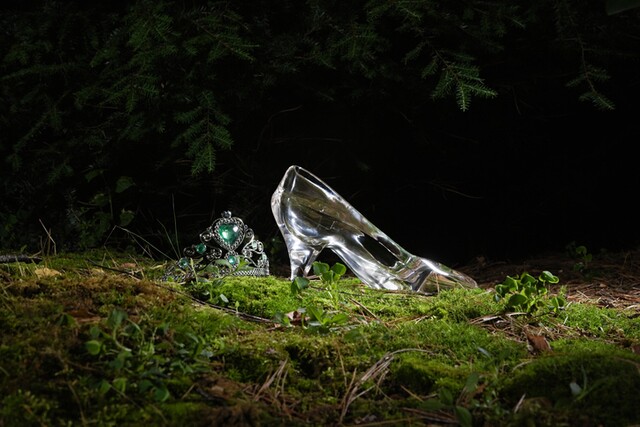
5. L. Tom Perry
Quorum of the Twelve Apostles, April 2002, “Becoming Men in Whom the Spirit of God Is”
Cinderella hasn’t just been mentioned to the women of the Church in conference—she’s also been mentioned in the priesthood session! In talking about the hard work his father did for the President Joseph F. Smith family, he said:
“In addition to his duties with the Smith family and their ‘aristocratic’ cows, my father was asked on occasion to do some housework. He would tell us stories like this: ‘One frosty morning I washed the steps leading to the official residence of the President of the Church. It nearly led to his downfall, for I let the water freeze before drying. Then I had to take boiling water and thaw the ice and take towels to dry the stones. The steps were nearly clean, but my classmates were passing on their way to school before the job was completed. It was a humbling experience.’
“By telling these stories, I don’t want to leave you with the impression that my father was a male twin to Cinderella. The Smith family took this poor farm boy from Idaho into their home while he finished high school and attended the University of Utah. They included him in their family activities, around the dinner table, and at family prayer. My father shared with us his witness that the prophet Joseph F. Smith was truly a man of God. . .” (Emphasis added.)
Read the rest of Elder Perry’s story here.
6. Dale G. Renlund
Quorum of the Twelve Apostles, October 2018, "Choose You This Day"
While Elder Renlund uses a scene from the stage play of Mary Poppins, Julie Andrews is the "practically perfect in every way" Disney Mary Poppins most of us recognize.
“The fictional character Mary Poppins is a typical English nanny—who happens to be magical. She blows in on the east wind to help the troubled Banks family of Number 17, Cherry Tree Lane, in Edwardian London. She is given charge of the children, Jane and Michael. In a firm but kind manner, she begins to teach them valuable lessons with an enchanting touch.
“Jane and Mchael make considerable progress, but Mary decides that it is time for her to move on. In the stage production, Mary’s chimney sweep friend, Bert, tries to dissuade her from leaving. He argues, ‘But they’re good kids, Mary.’
“Mary replies, ‘Would I be bothering with them if they weren’t? But I can’t help them if they won’t let me, and there’s no one so hard to teach as the child who knows everything.’
“Bert asks, ‘So?’
“Mary answers, ‘So they’ve got to do the next bit on their own.’
“Brothers and sisters, like Jane and Michael Banks, we are ‘good kids’ who are worth bothering about. Our Heavenly Father wants to help and bless us, but we do not always let Him. Sometimes, we even act as if we already know everything. And we too need to do ‘the next bit’ on our own.”
Read the rest of Elder Renlund’s talk here.
7. William Sheffield
Recent convert and friend of President Hinckley, April 1986, “The Question of a Mission”
When Gordon B. Hinckley gave a talk in the priesthood session, instead of telling the conversion story of his friend William Sheffield, he had Brother Sheffield tell the story himself. In the story, he shares:
“I didn’t particularly want to be a Mormon, I told my friends. Since I was in the divinity school, I presumed the Lord wanted me in the ministry. What would I do after graduating with an advanced degree in religion if I became a Mormon? Yet I wanted to be the leaf in a stream that I had promised the Lord I would be when we left California.
“During the entire time that I was working through, struggling with, and fighting the Joseph Smith story, my friends in the ward were patient, loving, and gentle. Every time I would tell the bishop that Joseph Smith’s story was more Disney than Disney, he would tell me, ‘Maybe so—but it’s all true.’ Every time I would tell the bishop’s counselor, ‘Joseph’s story can’t be true,’ he would say to me, ‘Yes, it is.’ They genuinely loved me, and I them” (emphasis added).
Disney sets the standard for fairytales and fiction, which fortunately Brother Sheffield learned was not actually the origin of the story of Joseph Smith and the First Vision. Read the rest of his conversion story here.
While Disney hasn’t released a movie about Joseph Smith, they have distributed one about Elder John H. Groberg’s missionary experiences called The Other Side of Heaven. Check it out the book the movie was based on here.
8. Cree-L Kofford
April 1999, “Your Name Is Safe in Our Home”
Though not one of the most-quoted Disney films, the rabbit from Bambi has a valuable lesson for children and adults alike.
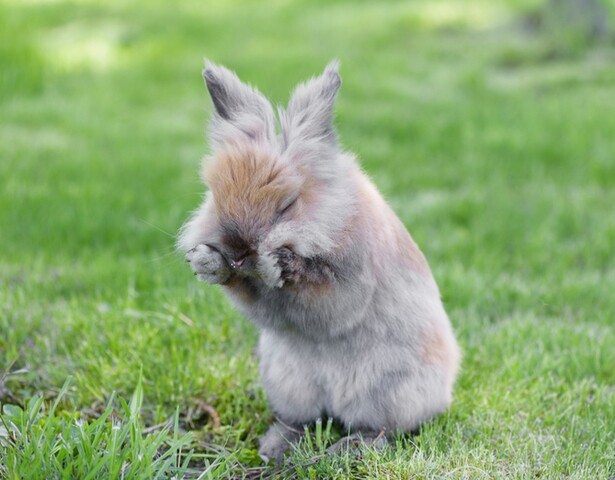
“I would like to say a few words to the Primary children who may be listening. Children, I’ve been trying to teach your moms and dads something very important, but I need your help. I’ll make you a deal. If you will promise to listen very carefully, I promise not to talk very long.
“Do you remember the story of Bambi, the little deer, and all of his friends in the forest? If you do, you will remember that one of Bambi’s good friends was a rabbit named Thumper. Thumper was about your age. He was a neat rabbit, but he had one problem. He kept saying bad things about people. One day Bambi was in the forest learning to walk, and he fell down. Thumper just couldn’t resist the temptation. ‘He doesn’t walk very good, does he?’ Thumper blurted out. His mother felt very bad and said, ‘What did your father tell you this morning?’ And then Thumper, looking down at his feet and kind of shifting his weight, said, ‘If you can’t say somethin’ nice, don’t say nothin’ at all.’ That’s a good piece of advice that all of us need to follow.”
For the rest of Elder Kofford's talk, click here.
9. Don Lind
NASA astronaut, October 1985, “The Heavens Declare the Glory of God”
While describing a trip into space, Don Lind used the story of Peter Pan, well-known in the Disney story world, to explain what space was like as he talked about a very spiritual experience he had there.

“I am sure the general image of space flight is one of impressive machines and billowing flames and the precision of high technology. That is not incorrect. But for me, there were also many special, personal, private feelings. Some of them were fun. Living in weightlessness is delightful. The Peter Pan ability to float to any corner of the laboratory and perch like a sparrow on the slightest protrusion made me feel as though I was living my little boy dreams.
“Some of my personal feelings were very spiritual. To look down on the earth from space is absolutely incredible. I knew ahead of time just exactly what I was going to see. I was intellectually prepared, but I was not prepared emotionally for what I saw. The world is very large. I knew that. But to see this huge, magnificent sphere slowly rotating beneath me was overwhelming. I have no ability to describe what it was really like, and no photographic emulsion can even start to do it justice. The visibility, of course, was excellent. But I was amazed at the intensity of the colors. I estimated that there were twenty shades of intense blue as the earth’s atmosphere changes from the gray of the curved horizon into the incredible black void of space. And when you look at an archipelago of islands, there are hundreds of shades of blue and green and yellow-tan that are just beyond description.
“The first time I had a minute to stop and just look at the earth, the absolute beauty of the scene brought tears to my eyes. In weightlessness, tears do not just quietly roll down your cheeks. They stay in front of your eyeballs and get bigger and bigger and in a few moments you feel like a guppy looking up through the surface of the aquarium.” (Emphasis added.)
To read more about Brother Lind’s journey as a Latter-day Saint in space, including an experience he had taking the sacrament in space, click here.
10. Neal A. Maxwell
Quorum of the Twelve Apostles, October 1994, “Brightness of Hope”
Have you ever heard of Pollyanna? Though it was originally the name of a 1913 novel by Eleanor H. Porter about a little girl who is blindly optimistic about life, it is likely familiar to most people modernly because of its 1960 Disney film adaptation starring Hayley Mills. Elder Maxwell referred to her story when talking about hope.
“Humble hope helps us to improve by being sufficiently free of ego to ask, ‘Lord, is it I?’ (Matt. 26:22.) Submissive hope also readies us to ‘give away all [our] sins’ because we have come to know Jesus, who alone can take them! (Alma 22:18.)
“Gospel hope keeps us from being muted by being either a naive Pollyanna or a despairing Cassandra. Voices of warning are meant to be heard, not just raised.
“Being blessed with hope, let us, as disciples, reach out to all who, for whatever reason, have ‘moved away from the hope of the gospel’ (Col. 1:23). Let us reach to lift hands which hang hopelessly down.
11. Alice in Wonderland
Though speakers usually quote Alice in Wonderland in its book form, whenever members of the Church head mentions of the Cheshire Cat and Alice in Wonderland, the floating grin of the striped pink and purple animated Disney cat is likely what comes to mind. The Cheshire has made multiple cameos in conference talks about choices, especially by President Monson. Here are just a few:
Thomas S. Monson
President of the Church, October 2010, “The Three Rs of Choice”
“Let us not find ourselves as indecisive as is Alice in Lewis Carroll’s classic Alice’s Adventures in Wonderland. You will remember that she comes to a crossroads with two paths before her, each stretching onward but in opposite directions. She is confronted by the Cheshire cat, of whom Alice asks, ‘Which path shall I follow?’
“The cat answers, ‘That depends where you want to go. If you do not know where you want to go, it doesn’t matter which path you take.’
“Unlike Alice, we all know where we want to go, and it does matter which way we go, for by choosing our path, we choose our destination.
“Decisions are constantly before us. To make them wisely, courage is needed—the courage to say no, the courage to say yes. Decisions do determine destiny.”
Read the rest of this talk here, or read similar analogies from President Monson in 2004, 1995, and most recently in 2016.

Jorge F. Zeballos
Member of the Seventy, April 2015, “If You Will Be Responsible”
“Having the desire to do what is right is not enough if we do not make sure to understand what our Father expects from us and wants us to do.
“In the story of Alice in Wonderland, Alice does not know which way to go, so she asks the Cheshire Cat, ‘Would you tell me, please, which way I ought to go from here?’
“The cat replies, ‘That depends a good deal on where you want to get to.”
“Alice says, ‘I don’t much care where.’
“’Then it doesn’t matter which way you go,’ says the cat
“However, we know that the path that leads to the ‘tree, whose fruit [is] desirable to make one happy’ —‘the way, which leadeth unto life’—is narrow. It takes effort to journey along the path, and ‘few there be that find it.’”
Read the rest of the talk here.
Bonus:
Though these phrases weren’t specifically mentioning Disney, they are still found nearly verbatim in well-known Disney films.
Elaine S. Dalton
Young Women General President, April 2010, “Remember Who You Are!”
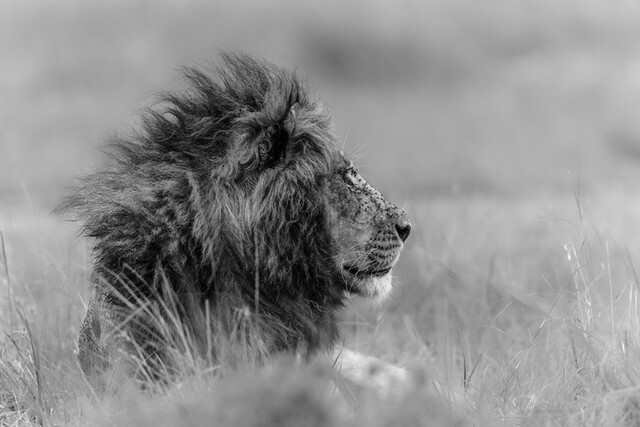
One of the best moments from The Lion King is when the baboon Rafiki is trying to help Simba remember his father and his responsibility as king of Pride Rock. Simba’s father appears to him and tells him, “You have forgotten who you are, and so you have forgotten me. . .Remember who you are. You are my son. . .”
How often have we heard this exact phrase from our Church leaders? It makes a particularly poignant appearance in Sister Dalton’s talk to the women of Church:
“Young women of The Church of Jesus Christ of Latter-day Saints, remember who you are! You are elect. You are daughters of God. You cannot be a generation of young women who are content to fit in. You must have the courage to stand out, to ‘arise and shine forth, that thy light may be a standard for the nations.’ The world would have you believe that you are not significant—that you are out of fashion and out of touch. The world calls to you with unrelenting, noisy voices to ‘live it up,’ ‘try everything,’ ‘experiment and be happy.’ Conversely, the Holy Ghost whispers and the Lord invites you to ‘walk in the paths of virtue,’ ‘lay aside the things of this world,’ ‘and cleave unto [your] covenants.’” (Emphasis added.)
To read the rest of Sister Dalton’s testimony of our divine worth, click here.
Neal A. Maxwell
Quorum of the Twelve Apostles, April 2001 “Plow in Hope”
The main theme of the Disney movie Meet the Robinsons, the encouraging phrase "Keep Moving Forward" is adopted by the main character, Lewis, and is actually also a powerful reminder for Latter-day Saints as well.
“The valiant among us keep moving forward anyway, because they know the Lord loves them, even when they ‘do not know the meaning of all things’ (1 Ne. 11:17). As you and I observe the valiant cope successfully with severe and relentless trials, we applaud and celebrate their emerging strength and goodness. Yet the rest of us tremble at the tuition required for the shaping of such sterling character, while hoping we would not falter should similar circumstances come to us!” (Emphasis added.)
Read the rest of the talk here.
President Spencer W. Kimball said something along similar lines in 1980:
“I suppose if I have learned anything in life, it is that we are to keep moving, keep trying—as long as we breathe! If we do, we will be surprised at how much more can still be done.”
Editor's note: This story originally ran in 2016 and was updated in March 2022.
Pre-order the April 2023 General Conference Addresses, Journal Edition
The General Conference Addresses Journal Edition will have all the text of the April 2023 general conference addresses in one spiral-bound paperback. Extra-wide, lined margins give you space to record your impressions and to document the insights you receive. Create an enduring record to make the inspired teachings of general conference an ongoing part of your gospel learning.



